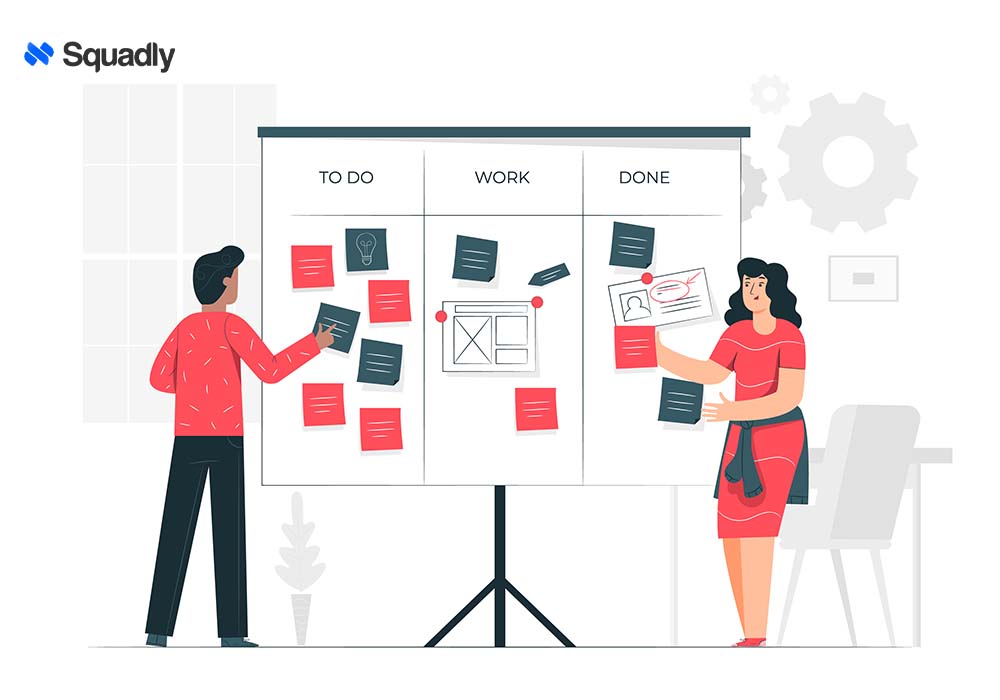If you have decided to go on a vacation with your family, will you just sit in the car with your family and leave for your destination or will you sit, forecast everything, and then plan accordingly to avoid any inconvenience and hurdles? Doesn’t the latter seem to be the right option? It seems right because planning and forecasting are important to predict a better future.
Workforce planning and forecasting are one of the most significant elements in organizational growth because talent is such a vital asset for any business. Unfortunately, many companies still don’t properly comprehend their workforce demands for the now and the future. The expansion of the company may be severely constrained as a result, stunting crucial ambitions.
Defining Workforce Planning And Forecasting:
The examination and assessment of a company’s present and future staffing requirements are known as workforce planning. In order to promote long-term performance, it entails evaluating the expertise and assets available in the existing workforce, figuring out what will be needed in the future, identifying gaps, and putting efforts in place to attract, hire, and retain the best talent.
Workforce planning is a tool that organizations may use to properly plan their employment initiatives. It assists them in determining whom they must hire when they should hire them, and why it is crucial to do so.
Is it too much to absorb? Let me simplify it with an example
Making It Simpler with an Example:
There are many various kinds of workforce planning, but one scenario would be if a company needed to make preparations in case it faced a significant influx of retirements in the near future. This would entail carrying out supply and demand analyses to determine how many staff members would be departing and coming on board, as well as a gap study to determine the precise difference between the two.
Sales can be another example to explain workforce planning and forecasting. Let’s imagine your company wants to grow internationally, but your sales team is focused in one nation, speaks one language, and understands the needs of one target market. Your workforce planning initiatives would entail learning:
- How many new salespeople you’ll need?
- How many languages do you wish to support?
- If the location of those salespeople should be abroad?
- If staff employees need to have specific local knowledge or skills?
- a clear picture of the problems with supply and demand in terms of costs and location.
- recognizing and fixing problems that can hinder productivity.
- a benefit for competition.
- consistent reporting of results to evaluate substantive and quantifiable outcomes.
With good workforce planning and forecasting, your company always has the talent, know-how, and experience needed to generate profitable business outcomes.
Workplace planning is creating a suitable and affordable plan for attracting, hiring, and training your employees while also continuously evaluating worker performance.

Organizations can utilize one of two popular workforce planning and forecasting models:
- Operational Workforce Planning
- Strategic Workforce Planning
Operational Workforce Planning:
Planning for the operational staff focuses on the current priorities of the company. Which staff level, for instance, is most able to successfully complete the existing deadlines and goals? It frequently helps managers create daily work plans for staff, helps staff members comprehend their tasks, and helps staff members stay productive during the workday.
Strategic Workforce Planning:
Strategic workforce planning addresses bigger organizational challenges and makes ensuring that the workforce is properly aligned with the organization’s overarching goals, long-term vision, and objectives.
6 Steps Of Workforce Planning And Forecasting:
Ways To Implement The Techniques Of Workforce Planning And Forecasting
Only if workforce planning can be positively and successfully executed will it be beneficial. Key concerns are:
- Obtain agreement on the strategy: Collaboration is key. Wide-ranging stakeholder consultation is required so that all parties may agree on and comprehend the justification for the actions being done.
- Make sure everyone engaged understands their roles and the actions they must take in order to ensure clear responsibility allocation and understanding.
- Support managers: In order to carry out their duties, line managers will need assistance from others, including human resources specialists. They must be equipped with the knowledge and abilities necessary to actively take part in the planning process and implement the results.
- Evaluate and incorporate learning: Since workforce planning aims to forecast the future, the evaluation must consider the results of choices and their repercussions. Evaluation should be iterative; the better at workforce planning an organization is, the more probable it is to develop pertinent evaluation criteria.
How Workforce Planning And Forecasting Will Influence Your Business?
A corporation can avoid risks like a talent drain caused by retirements or staff turnover by using effective workforce planning. Most companies have plans in place for these conceivable occurrences. The potential effects of talent risk on an organization’s finances, product development, and customer relationships are always being strategically evaluated.
Planning for the workforce has advantages like:
- a clear picture of the problems with supply and demand in terms of costs and location.
- Tools and reports that explain the effects of choices can help you manage future labor investments more effectively.
- recognizing and fixing problems that can hinder productivity.
- a benefit for competition.
- Metrics that enable management to see hazards before they have an impact on the organization’s objectives.
- consistent reporting of results to evaluate substantive and quantifiable outcomes.
What Is The Ultimate Objective Of Workforce Planning And Forecasting?
The main objective of workforce planning and forecasting is to develop a plan for your employment requirements that will enable you to achieve your strategic goals both today and in the future.
A thorough assessment of your current workforce, employee skills, experience, load capabilities, and potential talent gaps is necessary for workforce planning in order to accomplish this goal.
You can get a bird’s-eye view of your complete staff through performance tracking and personnel assessment, and you can make future plans that are actually going to happen.


